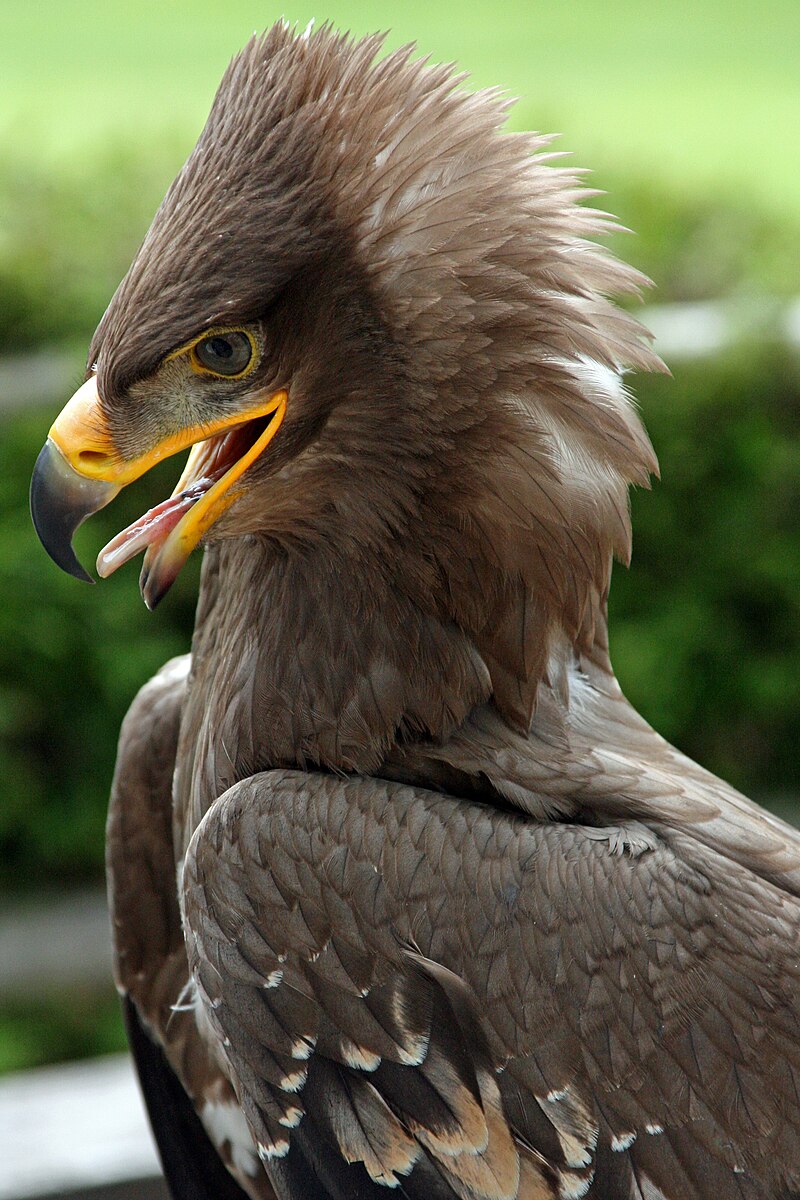Steppe eagles are birds of prey that primarily feed on small to medium-sized mammals, birds, reptiles, insects, and carrion. They are carnivorous and do not eat plants. Their diet varies based on the season and their location, but they are not adapted to digest plant material effectively.
What Do Steppe Eagles Eat?
Steppe eagles are known for their opportunistic feeding habits and can consume a wide range of prey items depending on availability. Their diet includes:
- Small to medium-sized mammals, such as ground squirrels, hares, and dikdiks
- Birds, including francolins, bustards, and hornbills
- Reptiles, such as lizards
- Insects, including termites
- Carrion and scavenged food from landfills
During the breeding season, steppe eagles tend to specialize in hunting specific mammals, such as ground squirrels. However, during non-breeding times, they feed on a variety of foods, including insect swarms, semi-altricial young of assorted animals, and carrion.
Steppe Eagles’ Digestive System
 Image source: Steppe Eagle by Fimb
Image source: Steppe Eagle by Fimb
Steppe eagles are not adapted to eat plants, and their digestive system is designed to break down meat and other animal-based foods. They do not have the necessary enzymes or gut bacteria to digest plant material effectively. Their beaks and talons are specialized for tearing and ripping prey, and their digestive tract is optimized for processing animal proteins and fats.
Seasonal Variations in Steppe Eagle Diet
The diet of steppe eagles can vary depending on the season and their location. During the breeding season, they may focus on specific prey species that are abundant and easy to catch, such as ground squirrels. However, during non-breeding times, they may need to diversify their diet to include a wider range of food sources, such as insect swarms, young animals, and carrion.
Steppe Eagles and Scavenging
Steppe eagles are known to scavenge on carrion and feed at garbage dumps. They have been observed feeding on a variety of animal remains, including hares, francolins, bustards, hornbills, and other animals. This scavenging behavior allows them to take advantage of readily available food sources, especially during times when their primary prey may be scarce.
Steppe Eagles and Plant-Based Foods
Despite their opportunistic feeding habits, steppe eagles do not consume plant-based foods. Their digestive system is not adapted to break down and extract nutrients from plant material. They lack the necessary enzymes and gut bacteria to effectively digest cellulose and other plant compounds.
Conclusion
In summary, steppe eagles are carnivorous birds of prey that do not eat plants. Their diet consists primarily of small to medium-sized mammals, birds, reptiles, insects, and carrion. They are opportunistic feeders and can adapt their diet to take advantage of available food sources, but they are not equipped to digest plant material effectively. Steppe eagles’ specialized hunting and feeding adaptations are focused on obtaining and processing animal-based foods.

